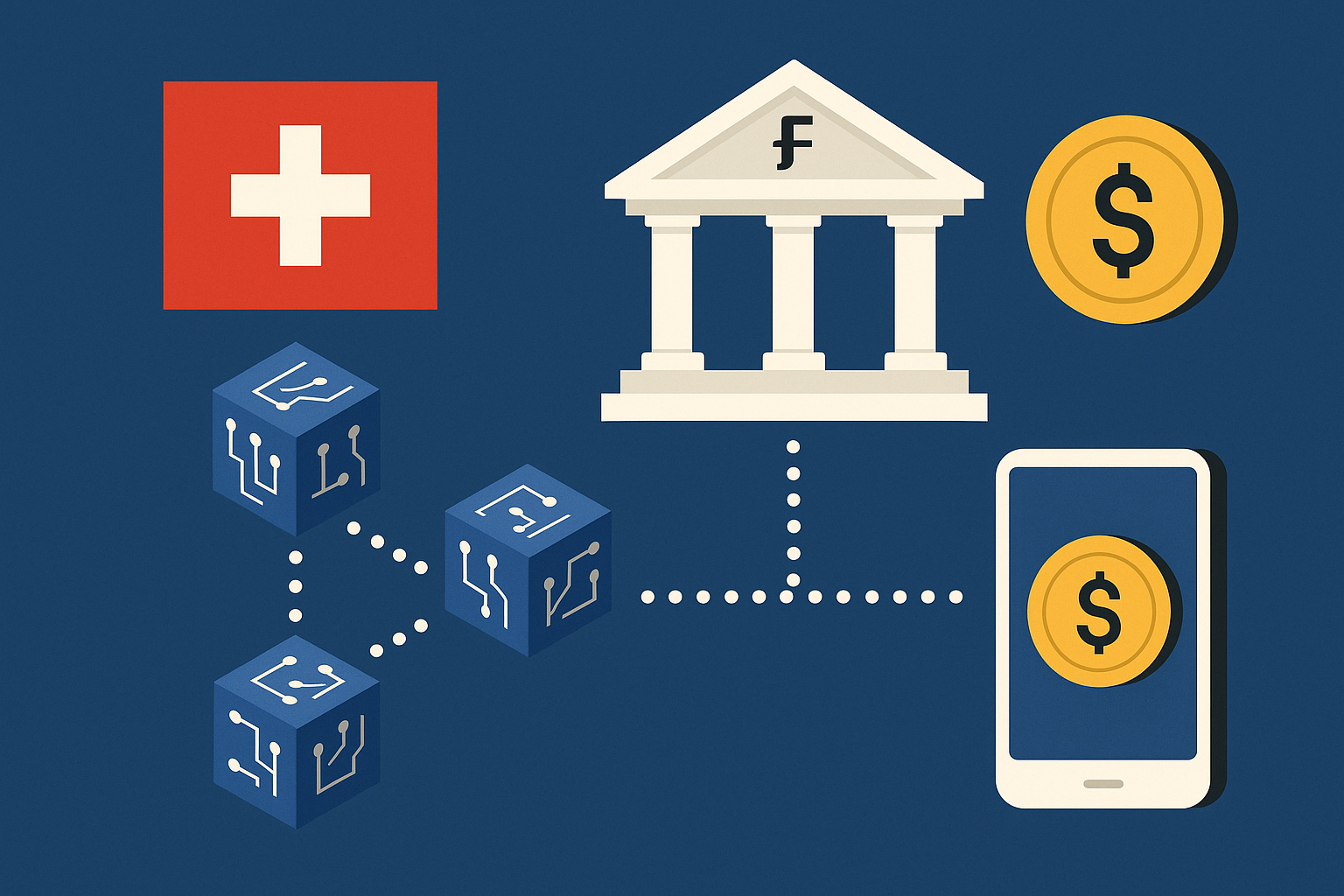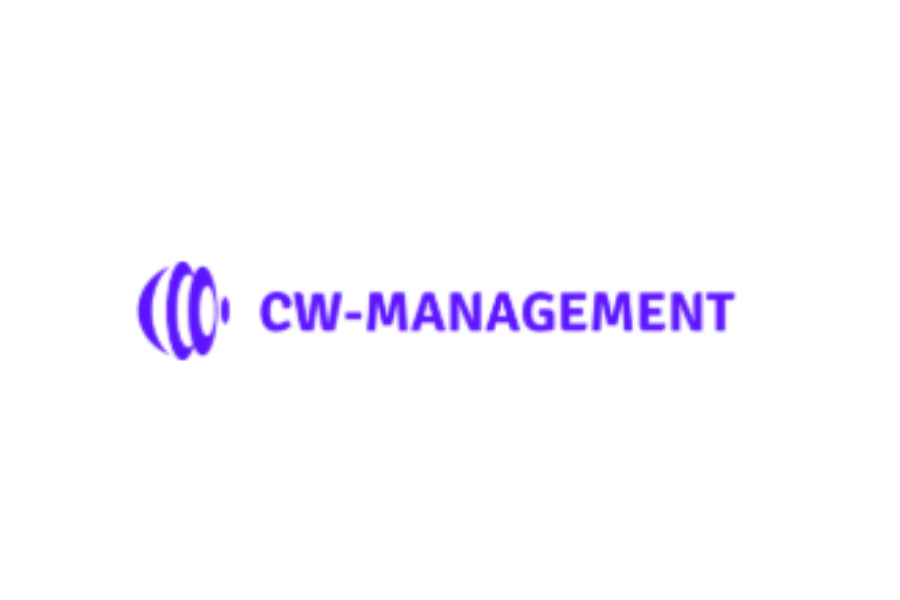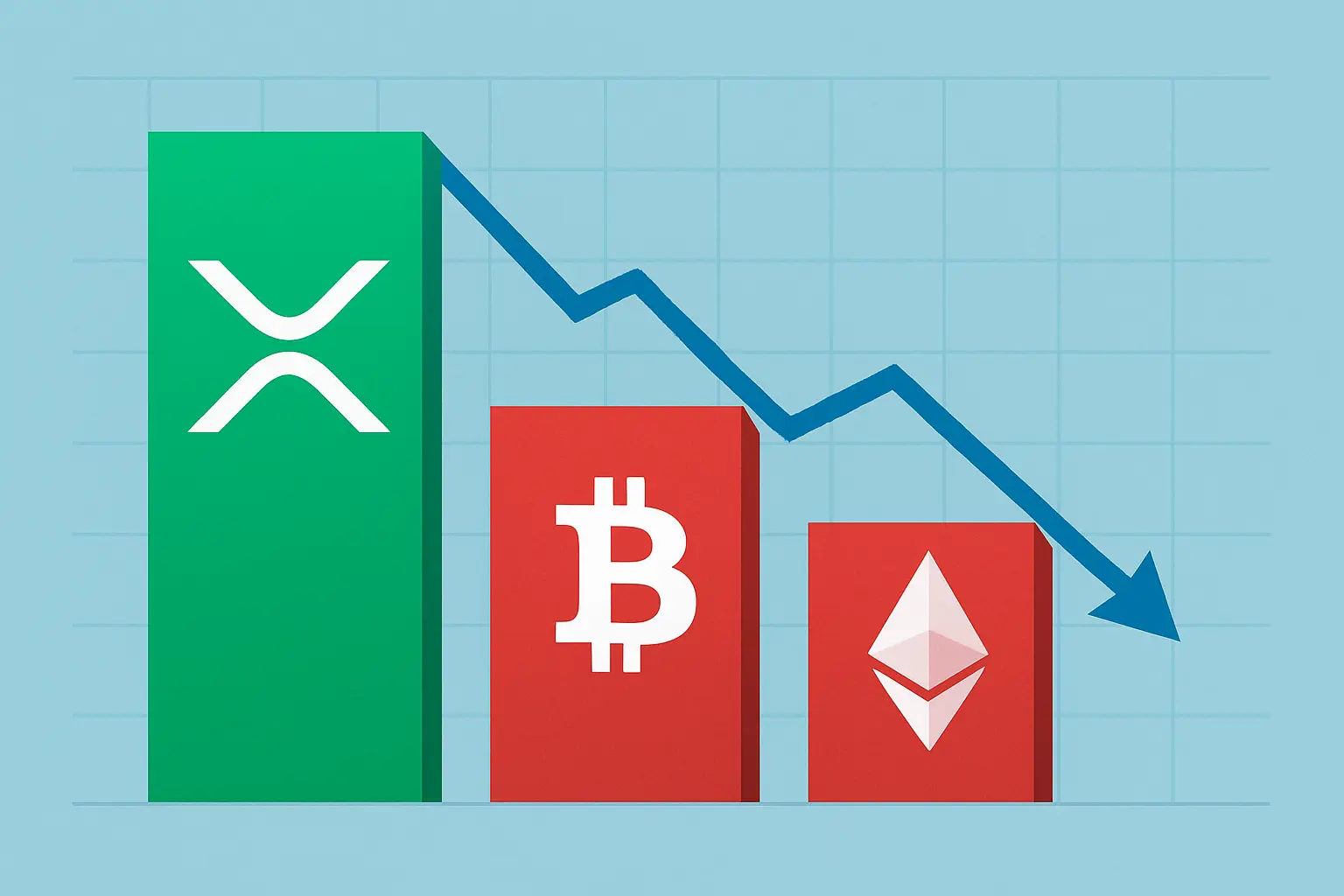Blockchain Technology
Swiss Banks Use Public Blockchain For Binding Payment: A Milestone In Global Finance

Introduction
The global financial sector has been undergoing a gradual but undeniable transformation with blockchain technology at the center of this evolution. For years, blockchain has promised faster, more secure, and more transparent financial transactions, yet adoption among large regulated banks has remained limited due to concerns about compliance, scalability, and risks. In September 2025, a historic moment occurred when Swiss banking giants PostFinance, Sygnum Bank, and UBS successfully conducted the first binding payment using deposits on a public blockchain as part of a feasibility study. This achievement did not just demonstrate the technological capability of blockchain in mainstream finance but also signaled that the era of practical blockchain adoption in traditional banking may be closer than ever before.
The Significance Of A Binding Blockchain Payment
The key aspect of this experiment lies in the word “binding.” Unlike pilot projects or theoretical trials where banks simulate blockchain settlements in controlled environments, this test involved an actual enforceable payment that was legally binding. It represented a transaction where real value changed hands using a public blockchain infrastructure. For banks such as UBS and PostFinance, which manage trillions in assets, this was not just a symbolic step but a proof of concept that blockchain technology could seamlessly integrate into the heavily regulated, high-stakes environment of international finance.
Historically, blockchain adoption in financial services has been concentrated in areas like cross-border remittances, digital asset custody, or tokenization of real-world assets. However, large-scale payment settlements between regulated banks had remained elusive. By completing this binding transaction, Swiss banks showed that blockchain can play a central role in the plumbing of the financial system—an area traditionally dominated by central bank clearinghouses and legacy settlement systems like SWIFT.
How The Payment Was Conducted?
While technical details of the transaction have not been fully disclosed to the public, reports confirm that the payment was made using tokenized bank deposits on a public blockchain infrastructure. Each participating bank represented deposits in a digital tokenized form, ensuring the payment was not reliant on cryptocurrencies but on existing fiat deposits held within regulated institutions. This approach bridged the gap between traditional money and blockchain technology, offering a secure pathway to transact without introducing additional volatility or unregulated assets.
The feasibility study also focused on legal enforceability. For the payment to qualify as “binding,” Swiss regulatory frameworks had to recognize the tokenized deposit transfer as legally equivalent to a fiat money settlement. This required collaboration between the banks, regulators, and legal experts to ensure compliance. The success of the transaction confirmed that the necessary legal, technical, and operational foundations can be aligned, making such payments a realistic option in future banking infrastructure.
Why Switzerland Leads Blockchain Banking Innovation?
Switzerland has long been at the forefront of blockchain adoption. With its “Crypto Valley” in Zug, supportive regulations, and openness to fintech innovation, the country has cultivated an environment where traditional finance and emerging technologies intersect. Sygnum Bank, one of the participants, is among the world’s first digital asset banks fully licensed by regulators. UBS, a global banking powerhouse, has been exploring blockchain applications for years, while PostFinance is recognized for its efforts to modernize digital payment systems.
This alignment of innovation and regulatory clarity is critical. Unlike many countries where blockchain adoption is hindered by uncertain legal frameworks, Switzerland provides a sandbox where financial institutions can experiment while remaining compliant. This successful binding payment further strengthens Switzerland’s reputation as a leader in blockchain finance and sets a precedent for other financial hubs to follow.
Potential Impacts On The Global Financial System
The implications of this event extend far beyond Swiss borders. If blockchain-based interbank payments prove efficient and reliable, they could disrupt how financial institutions settle transactions globally. Some of the potential impacts include:
Faster Settlement Times
Traditional interbank payments can take hours or even days to settle, especially across borders. Blockchain offers near-instant settlement, drastically reducing delays and liquidity management challenges.
Reduced Operational Costs
Legacy payment systems involve intermediaries, clearinghouses, and reconciliation processes that add costs. Blockchain eliminates many of these intermediaries, offering a leaner system.
Increased Transparency and Security
Every blockchain transaction is recorded on an immutable ledger, ensuring transparency and reducing the risk of fraud. Cryptographic security enhances protection against tampering.
Regulatory Confidence
Perhaps the most important outcome of the Swiss experiment is the confidence it inspires among regulators. Demonstrating that blockchain can be used within legal and regulatory frameworks sets the stage for broader adoption.
Pathway to Central Bank Digital Currencies
Many central banks are exploring digital currencies (CBDCs). The success of tokenized deposits in a real binding payment could provide insights into how CBDCs might interact with commercial banks in the future.
The Role Of Tokenized Bank Deposits
One of the most interesting aspects of the Swiss experiment is the use of tokenized bank deposits rather than cryptocurrencies. Unlike volatile assets such as Bitcoin or Ethereum, tokenized deposits are fully backed by fiat held in regulated accounts. This eliminates price volatility while maintaining the efficiency of blockchain transactions.
Tokenized deposits may become the backbone of blockchain-based banking because they combine the best of both worlds: the stability of fiat and the speed of decentralized ledgers. If widely adopted, they could create a unified system where money moves instantly across institutions and borders without requiring costly intermediaries.
Challenges And Risks Ahead
While this development is promising, there are several challenges that must be addressed before blockchain payments become mainstream.
Regulatory Harmonization
Although Switzerland provides a supportive environment, not all jurisdictions are equally progressive. For blockchain payments to scale globally, cross-border regulatory harmonization will be essential.
Interoperability
Multiple blockchains exist, each with different technical standards. Banks will need interoperable solutions to ensure seamless transactions across networks.
Cybersecurity Risks
While blockchain is secure, vulnerabilities can arise through smart contracts, wallets, and user interfaces. Large-scale adoption would make these systems attractive targets for cyberattacks.
Legal Frameworks
Ensuring that blockchain transactions are legally binding across jurisdictions requires significant updates to existing financial laws. This could take years of negotiation and adaptation.
Operational Transition
Integrating blockchain into legacy banking systems is a complex task. Banks must upgrade their infrastructure, retrain staff, and ensure continuity of services during the transition.
A Step Toward The Future Of Finance
Despite challenges, the Swiss banks’ achievement provides a roadmap for the future. The fact that some of the world’s most trusted financial institutions successfully conducted a legally binding payment on a public blockchain demonstrates that blockchain is no longer confined to the realm of startups and cryptocurrencies. It is becoming a tool for mainstream financial operations.
The move aligns with broader trends in finance, where tokenization of assets, decentralized finance (DeFi), and central bank digital currencies are gaining momentum. This single experiment could catalyze broader adoption, encouraging other banks worldwide to explore similar initiatives.
How Regulators May Respond?
Regulators across the globe are closely observing such developments. The success of this payment will likely influence future regulatory decisions. Central banks, in particular, may use this as evidence that blockchain infrastructure can be integrated into the financial system without undermining stability.
At the same time, regulators will remain cautious. They will demand strict compliance with anti-money laundering (AML), know-your-customer (KYC), and counter-terrorism financing (CTF) rules. Any blockchain system adopted by banks will need to meet these standards, which means privacy-preserving yet transparent technologies will play a central role.
The Broader Implication For Customers
While this transaction was conducted at an interbank level, the long-term implications could benefit retail customers. Faster settlements mean individuals could see instant bank transfers instead of waiting hours or days. Reduced costs in banking infrastructure could translate to lower transaction fees. Most importantly, blockchain adoption in mainstream finance could foster innovation, offering customers more efficient and secure financial products.
Looking Ahead: The Next Decade Of Blockchain Banking
The success of Swiss banks using blockchain for binding payments is likely the first of many milestones. Over the next decade, we can expect the following developments:
Standardization of Tokenized Deposits: More banks will issue digital tokens backed by deposits.
Integration with CBDCs: Central banks may build systems that work directly with tokenized deposits.
Expansion Beyond Payments: Beyond interbank transfers, blockchain could be used for loans, securities settlement, trade finance, and insurance.
Global Networks of Blockchain Banks: Just as SWIFT connects banks today, future networks may be blockchain-based.
Mainstream Public Acceptance: As customers experience the benefits, confidence in blockchain banking will grow.
Conclusion
The first binding payment on a public blockchain conducted by PostFinance, Sygnum Bank, and UBS is a historic achievement for the global financial system. It demonstrates that blockchain technology is not only theoretically viable but also legally enforceable and operationally effective in mainstream banking. While challenges remain, this event signifies a turning point, paving the way for a future where blockchain becomes a core component of the global financial infrastructure.
As banks, regulators, and customers embrace this evolution, we may soon see a financial system that is faster, more transparent, and more inclusive than ever before. Switzerland’s pioneering step provides a glimpse into what the future of money may look like, and it sets the stage for other countries and institutions to follow.











